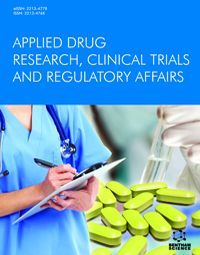
Abstract
Background: Guillain-Barre syndrome (GBS) is one of the principal causes of acute neuromuscular weakness and paralysis worldwide. Its clinic-epidemiological profile and factors influencing its treatment outcomes in developing countries are very minimally studied.
Objective: The study aimed to find out the risk factors, clinical presentation, management, and predictors of treatment outcomes among GBS patients admitted in two tertiary care hospitals.
Materials and Methods: Medical records of 121 inpatients with GBS confirmed based on the Brighton criteria over the recent five-year period from June 2017 to May 2022 were examined. Assessment of the severity of GBS was done using the Hughes functional grading scale.
Results: The mean age at onset was 36.8 ± 18.9 years. The majority of the patients [82 (67.8%)] were males. Antecedent illnesses within 1 month of onset of GBS were present among 34 (28.1%) patients. The majority of them developed respiratory tract illnesses [13 (38.2%)]. Recurrent history of GBS was observed among 4 (3.3%) patients. The median time gap between the onset of antecedent illnesses and the onset of GBS was 5 days (IQR 3, 10). The most common symptom among GBS patients was the weakness of the muscles of the extremities [117 (96.7%)]. The pattern of progression of weakness among 53 (45.3%) of these patients was from the lower to upper limbs. The most common sign noted was hypotonia [64(52.9%)]. Complications due to GBS were observed among 12 (9.9%) patients. The most common complication among them was respiratory distress in 11 (91.7%) patients, followed by autonomic dysfunctions in 8 (66.7%). Albuminocytological dissociation in cerebrospinal fluid was noted among 48 (39.7%) patients. The majority of patients in nerve conduction studies had acute inflammatory demyelinating polyneuropathy [61(50.4%)]. The majority of the GBS patients [68 (56.2%)] were treated using intravenous immunoglobulin (IVIG). 95 (78.5%) patients improved with treatment at the time of discharge. In multivariable analysis, the absence of antecedent illnesses (p =0.029), Brighton’s diagnostic certainty levels 1 and 2 of GBS (p =0.024), and being on IVIG treatment (p =0.05) were associated with improvement in disease condition among the patients.
Conclusion: Appropriate diagnosis of GBS using both clinical and laboratory evidence and providing appropriate treatment along with more supervision among GBS patients with a history of antecedent illnesses will help improve their prognosis at the time of discharge.
[http://dx.doi.org/10.1186/s12974-021-02319-4] [PMID: 34763713]
[http://dx.doi.org/10.1101/2020.05.27.20104620]
[http://dx.doi.org/10.4103/2348-3334.196059]
[http://dx.doi.org/10.4103/jfmpc.jfmpc_951_20] [PMID: 33409208]
[http://dx.doi.org/10.1038/s41582-019-0250-9] [PMID: 31541214]
[http://dx.doi.org/10.1155/2019/3867946] [PMID: 31275647]
[http://dx.doi.org/10.1093/brain/awt285] [PMID: 24163275]
[http://dx.doi.org/10.3389/fneur.2019.00225] [PMID: 30930839]
[http://dx.doi.org/10.18203/2349-3933.ijam20162203]
[http://dx.doi.org/10.13005/bpj/1837]
[PMID: 26421004]
[http://dx.doi.org/10.3329/birdem.v7i1.31270]
[http://dx.doi.org/10.5455/2320-6012.ijrms20140513]
[http://dx.doi.org/10.4103/0028-3886.310112] [PMID: 33642275]
[http://dx.doi.org/10.18535/jmscr/v5i5.192]
[http://dx.doi.org/10.1212/WNL.0b013e3181cff735] [PMID: 20157160]
[http://dx.doi.org/10.1016/j.ncl.2013.01.005] [PMID: 23642721]
[http://dx.doi.org/10.1002/mus.25992] [PMID: 29053890]
[http://dx.doi.org/10.1007/s00415-019-09634-0] [PMID: 31734909]
[PMID: 27775812]
[http://dx.doi.org/10.1002/acn3.51627] [PMID: 35908170]
[http://dx.doi.org/10.1136/jnnp-2022-329937] [PMID: 36428088]
[http://dx.doi.org/10.1007/s12098-008-0099-1] [PMID: 18581067]








